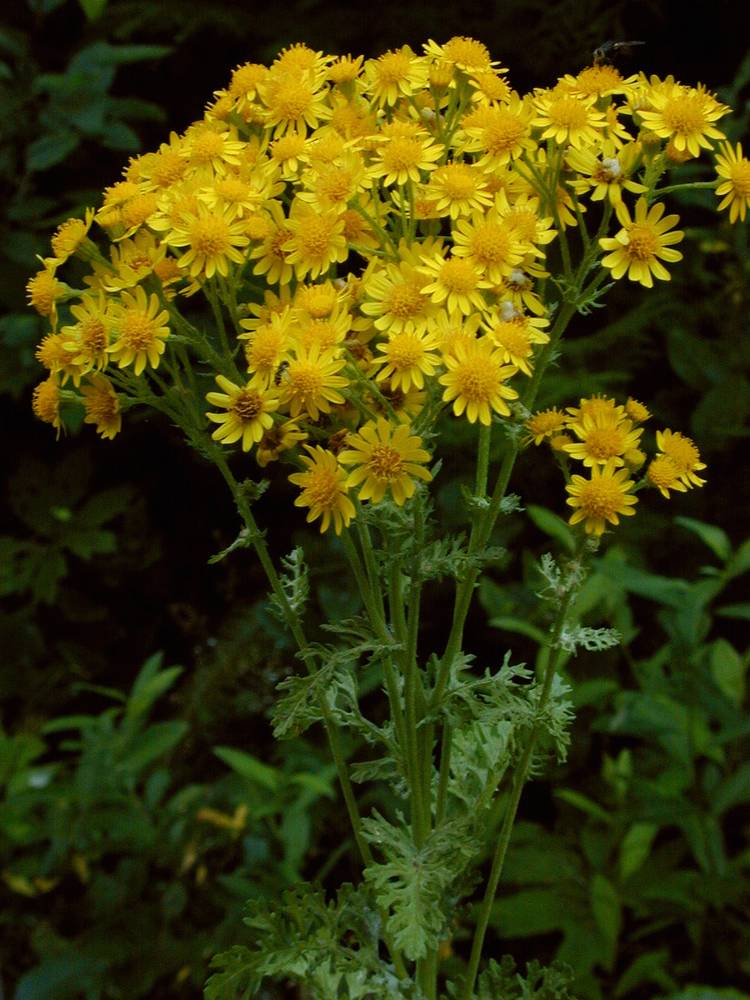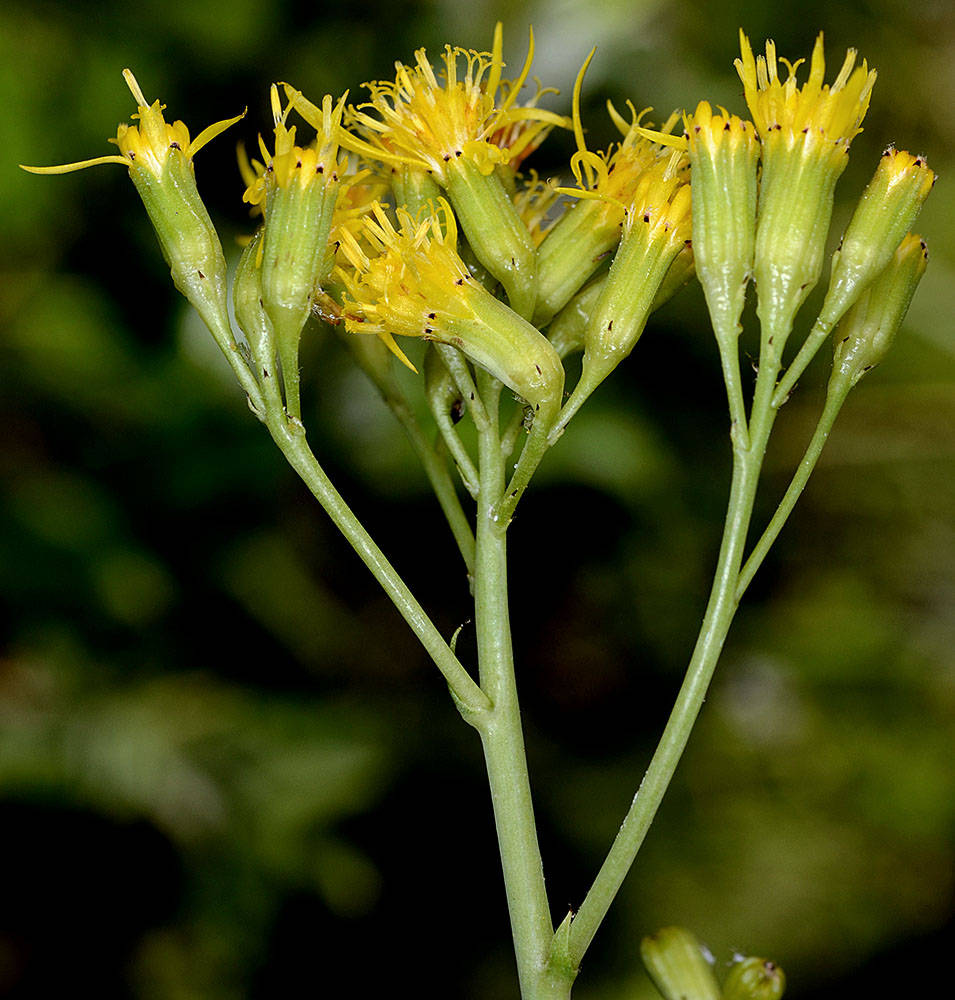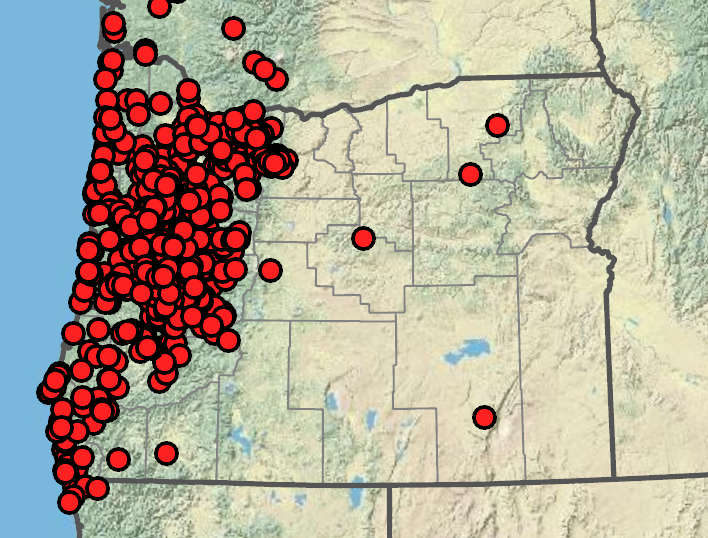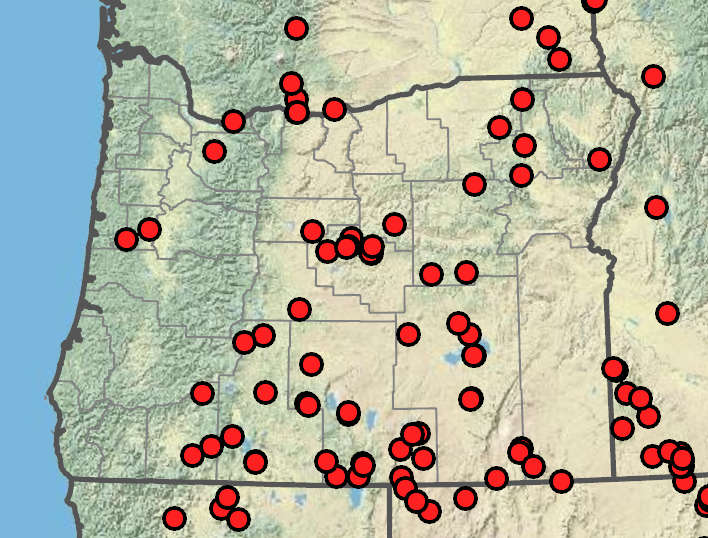Senecio jacobaea
Senecio hydrophilus
stinking willie, tansy ragwort
alkali marsh butterweed, water groundsel
1, or rarely 2–4 and loosely clustered, often purple-tinged, sparsely and unevenly tomentose.
1, or 2–4 and loosely clustered, often bluish green, usually glaucous and glabrous.
basal usually withering before flowering;
cauline ± evenly distributed along stems;
distal slightly smaller; ovate to broadly ovate, bases tapered, usually 1–3-pinnate, ultimate margins dentate;
lobes obovate to spatulate, petiolate.
progressively reduced distally; thick; fleshy-turgid;
basal and lower cauline elliptic to oblanceolate, bases tapered;
margins entire to denticulate; ± petiolate; middle and upper cauline bract-like;
surfaces glaucous, sessile.
compound corymb-like arrays;
bracts conspicuous but small.
compound corymb-like arrays;
bracts 0.
widely cylindric or urn-shaped.
cylindric or narrowly urn-shaped.
~13;
rays 8–12 mm.
5, sometimes 0;
rays 3–5 mm.
60–70+.
20–35.
13, 3–4(5);
tips black or dark green.
8 or 13, 5–8 mm;
tips usually black.
2–6 bractlets, inconspicuous, usually < 2 mm.
2–4+ bractlets, inconspicuous, usually < 2 mm.
0.75–1.3 mm, sparsely hairy or glabrous.
2.5–3 mm, glabrous.
(10)20–60+.
20–40(80).
=40.
=40.
Senecio jacobaea
Senecio hydrophilus
Disturbed areas, pastures, roadsides. Flowering May–Sep. 0–1600 m. Casc, CR, Est, Sisk, WV. CA, ID, WA; north to British Columbia, northeast to MT, northeastern North America; Europe. Exotic.
Senecio jacobea is an introduced weed, originally from Europe. It establishes in places with cool, wet summers and is particularly toxic to livestock. In most states where it occurs, this species has been declared a noxious weed.
Standing water in marshes, swampy places, alkaline sites. Flowering Jun–Aug. 0–2100 m. BR, BW, Casc, CR, ECas, Lava, WV. CA, ID, NV, WA; north to British Columbia, northeast to MT, east to SD, southeast to CO. Native.
Senecio hydrophilus and S. hydrophiloides can be very difficult to distinguish on herbarium specimens. There are, however, significant ecological differences, with the former species restricted to alkaline soils and the latter found in damp but not alkaline places.
Debra Trock
Debra Trock
- Local floras:
BC,
CA,
OR,
WA
- Local Web sites:
CalFlora,
CalPhotos,
Flora NW,
PNW Herbaria,
Turner Photog.
WildflowerSearch
iNaturalist (observations)
USDA Plants Database
- LBJ Wildflower Center
- SEINet
- Plants of the World Online
- Encyclopedia of Life
- Wikipedia
- Google Image Search
- Local floras:
BC,
CA,
OR,
WA
- Local Web sites:
CalFlora,
CalPhotos,
Flora NW,
PNW Herbaria,
Turner Photog.
WildflowerSearch
iNaturalist (observations)
USDA Plants Database
- LBJ Wildflower Center
- SEINet
- Plants of the World Online
- Encyclopedia of Life
- Wikipedia
- Google Image Search





